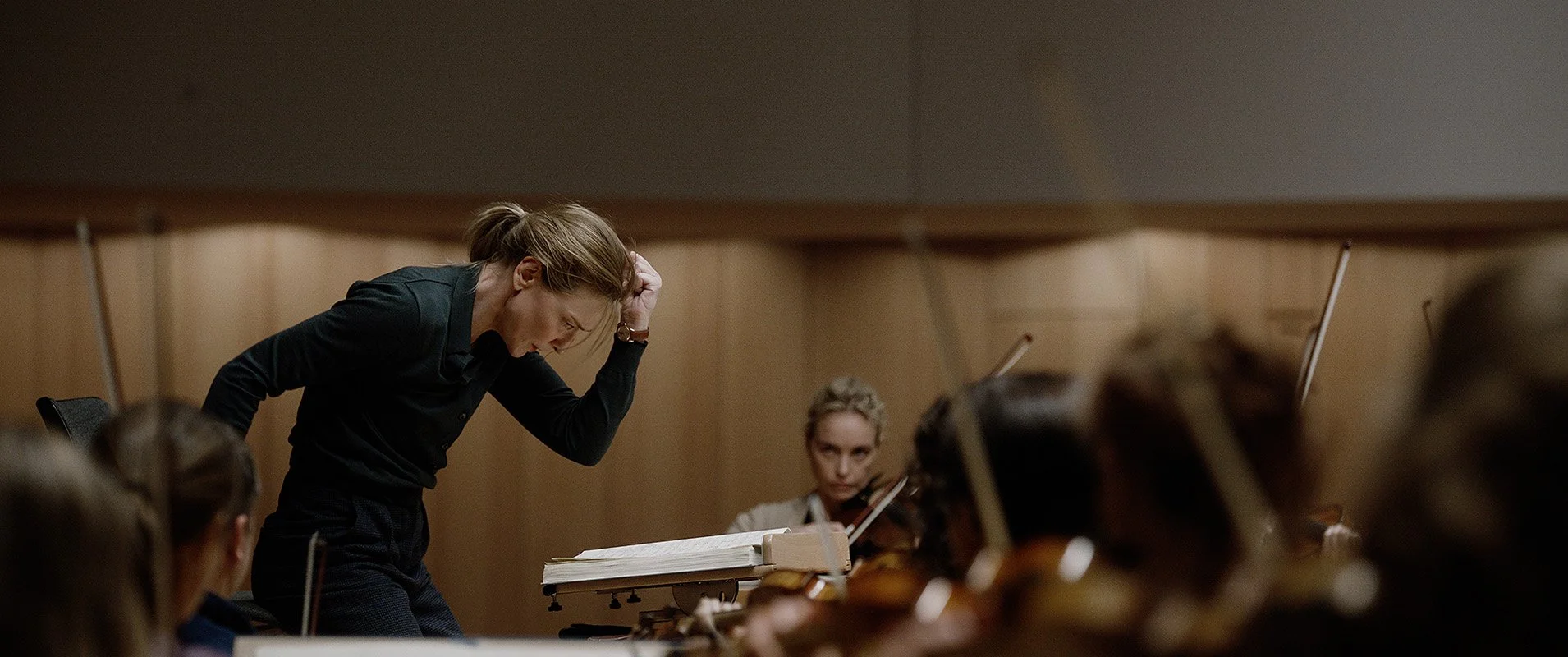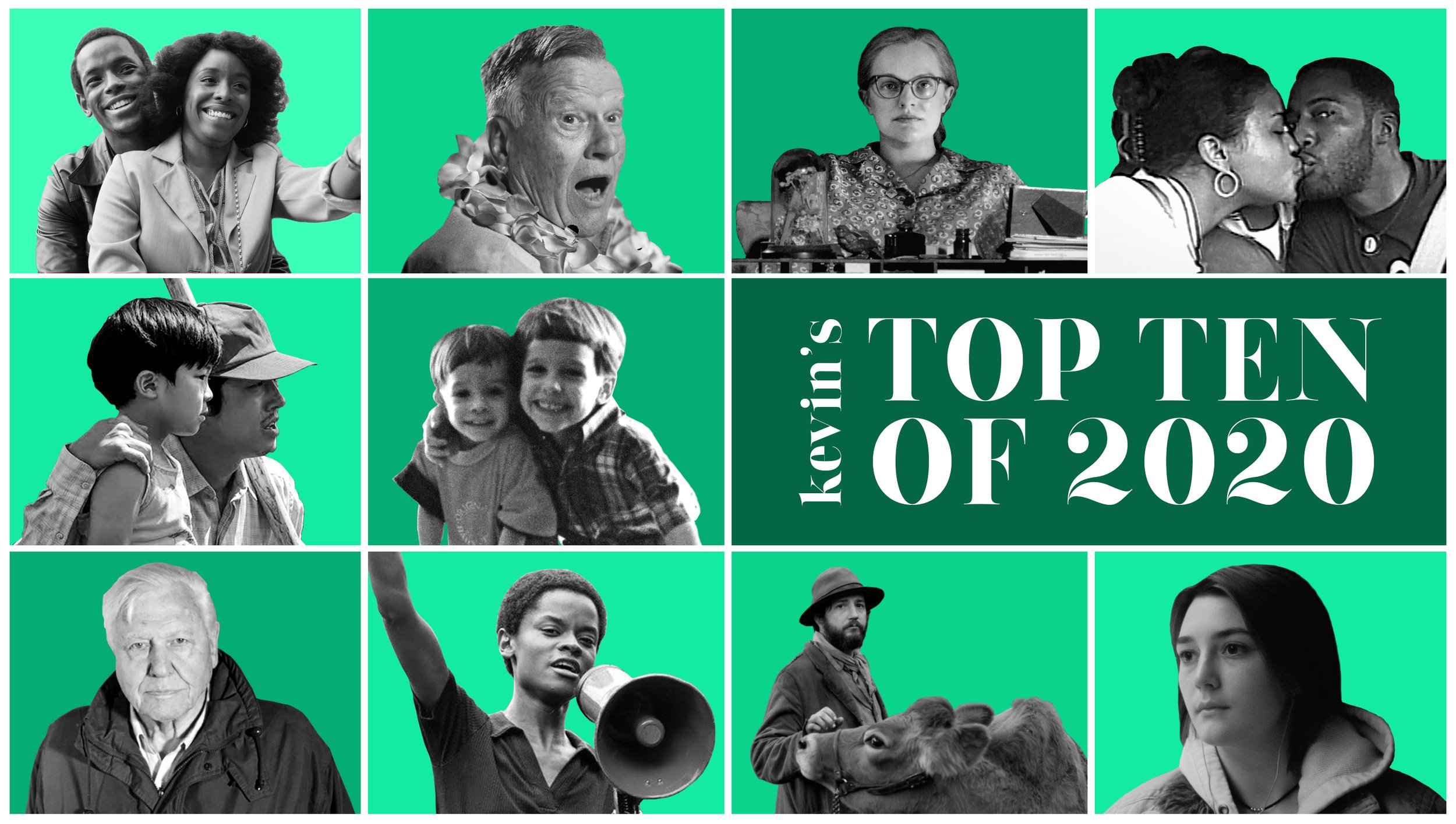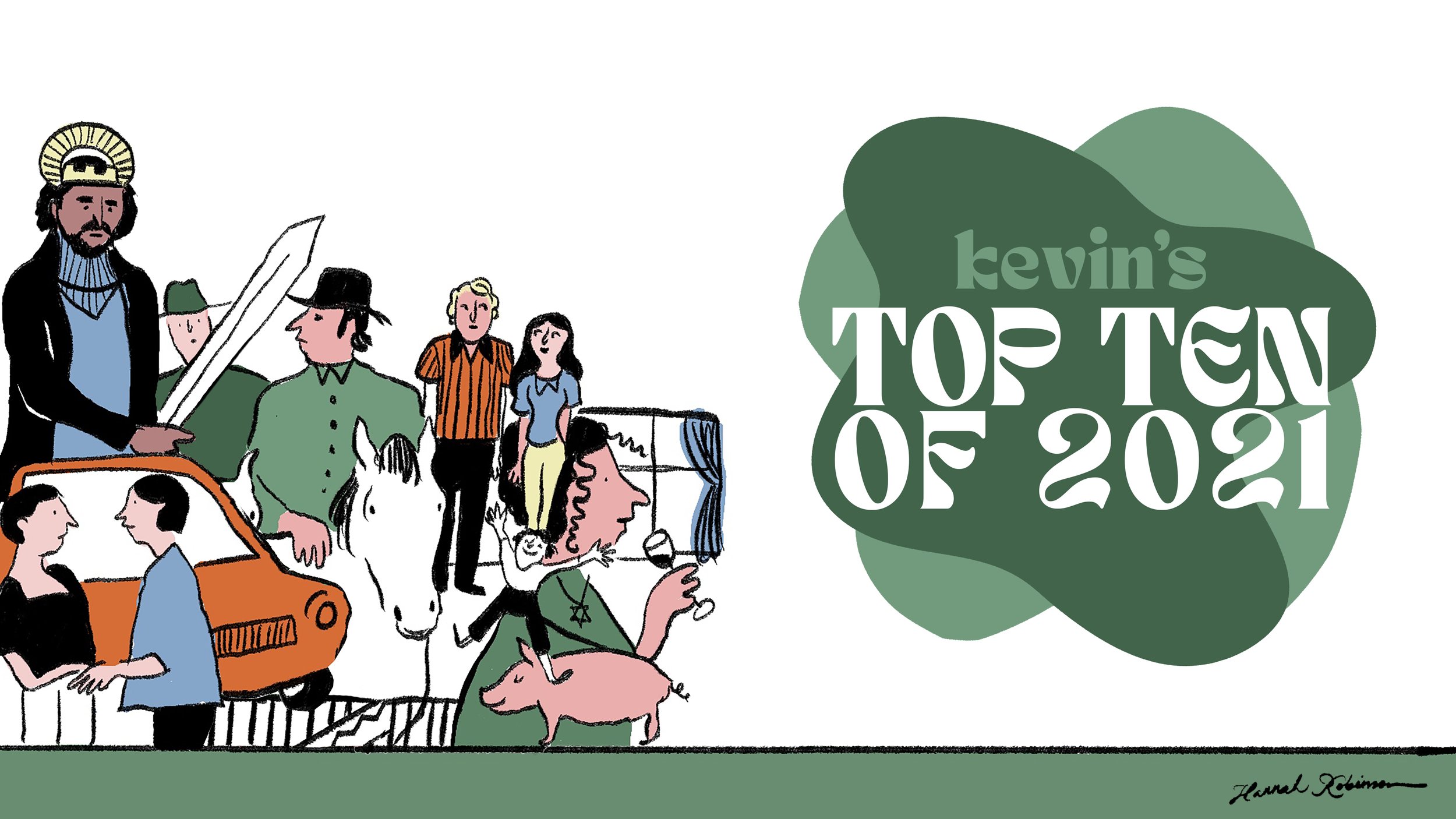Kevin's Top Ten Films of 2022
“When I choose to see the good side of things, I'm not being naive. It is strategic and necessary. It's how I learned to survive through everything.”
Without fail, every passing year is a good year for movies filled with stories worth your time. Showcasing what’s possible on the silver screen, 2022 produced an array of dazzling images, the very same ones I assume Nicole Kidman still speaks of to this day. But like always, the quiet innovations in storytelling between the lines and on the pages were a rush to see too. Talking more about what stories stole our hearts and stuck in our minds is always a highlight of my year. So without further ado…
—
Honorable Mentions
Guillermo del Toro’s Pinocchio, Bones and All, Triangle of Sadness, After Yang, George Carlin’s American Dream, Hit the Road, EO, Armageddon Time, Turning Red, X, Babylon, The Fabelmans
—
10. Avatar: The Way of Water
Were there movies I liked more than James Cameron’s long-gestating blockbuster sequel, Avatar: The Way of Water? Absolutely. There were many films I thought about placing here. Ultimately, I had to go with my gut, because sometimes you just really want to swim with a goddamn space whale.
I’m not breaking ground on any Avatar related analysis, so I’ll keep this very brief. Yes, this movie is so visually stunning that it could have zero plot and still be watchable. Instead, thankfully, James Cameron makes a series of incredibly compelling choices, from storytelling devices down to innovative camera technology, that elevate this behemoth of a film past recent bloated blockbusters. It’s not revolutionary storytelling, but it is deft. It would be fantastic if Hollywood did large scale storytelling like Cameron on the regular, but until then, I’ll gladly settle for the rare effort that is above-average in every aspect. Avatar: The Way of Water is a transcendent theater-going experience, so I can’t not recognize it (and again, the whale sequence!!) here.
—
9. Marcel the Shell with Shoes On
In what has to be the most compelling movie of the year when ranked by main character weight, Marcel the Shell with Shoes On introduces us to a curiously minuscule, but not minusculely curious, mollusk named Marcel. If you’re not already familiar with the old viral hit, here are the facts: Marcel is a small, talking shell with feet who lives in an empty house with his Nana Connie and has a penchant for making you tear up in a movie theater during his first feature released this past summer.
“Guess why I smile a lot?” Marcel asks. “Uh, 'cause it's worth it!”
Marcel himself is animate with stop-motion and voiced by a top tier performance by comedian, writer, and co-creator Jenny Slate. With Nana Connie, an impressively effective Isabella Rossellini, they craft Rube Goldberg-esque contraptions that help them MacGyver their way through a human-sized home where their whole shell family once lived before they were separated. One day Dean, played by director, writer, and co-creator Dean Fleischer-Camp, moves in with Connie and Marcel and documents Marcel for the internet to great success. What follows is one of the most tender films of the year, anchored by a production that leaves me questioning how they filmed nearly any of it. Truly don’t miss this existenshell (sorry!) delight of a film.
—
8. We're All Going to the World's Fair
We all have fallen down a late-night internet rabbit hole, so we recognize Casey’s glazed-over look as she binges a YouTube video trend in the opening of Jane Schoenbrun’s debut feature We're All Going to the World's Fair. To participate in the trend, you say a phrase (the title of the film), watch a video, and smear blood on your computer. Then weird, unexplainable shit begins to happen to you. Casey needs no more convincing than the dozens of other video replies joining the game. She is lonely. This World’s Fair thing is trending. She’s going to go too.
Like the internet itself, We’re All Going to the World’s Fair is an apropos murky mixture of loneliness and oversharing. Not all of us have been a teenager on the double-edged sword that is today’s internet with its of ever-evolving trends, slang, and customs. This film personifies the precarious threat that could be behind the other keyboard that isn’t your own. We’re aware of its danger, but with the constant motion online it’s hard to know what and who to trust. This film isn’t as interested in heightening the fear of being online as something else. With one arresting perspective shift midway through, another YouTuber, JLB, is revealed to be a lonely, concerned, and middle-aged man. Hardly the pest we might have first suspected when he gave attention to Casey’s videos. Perhaps the internet is bridging two people who can help one another?
—
7. Decision to Leave
Watching Park Chan-wook films sometimes feels like watching a grandfather clock. There is such ornate artistry in the craftsmanship of both that you are willing to overlook their sometimes complicated, wieldy natures. I say this as someone who could watch gears turn all day and cannot imagine letting a clock, of all things, take up floor space!
Simply put, Park’s Decision to Leave starts as a twisted Hitchcockian love story about a married detective becoming enamored with a woman suspected of pushing her now deceased husband off a cliff. The film’s laurels rest on the execution of hair-pin twists in melodrama and the unfolding of a dense mystery, and Park juggles both expertly — first by making heartbreak feel good in a story like this, but maybe not as good as an unforgettable sushi meal during a police interrogation. Tang Wei and Park Hae-il turn in remarkably precise and minute performances —with the central will-they-or-won’t-they sexual tension being a highlight of the film — and Park’s puzzle solving narrative works in unison with its editing to create a mesmerizing pace that keeps the film brisk. For what it’s worth, and for those who are in the know, this film earns every single step of its 138 flights out of a possible 138 flight rating.
—
6. Everything, Everywhere, All at Once
If there’s a movie that most captured the zeitgeist this past year it’s the Daniels’ Everything, Everywhere, All at Once. Released in March, this film unexpectedly has some of the longest legs in the 2023 awards race. And for good reason! An intricate, bombastic plot opens with Evelyn Wang (Michelle Yeoh), her husband Waymond (Ke Huy Quan), and their daughter Joy (Stephanie Hsu) learning their family laundromat is under audit from the IRS and is in danger of repossession. Simultaneously, a dark force travels between parallel universes searching for a way to destroy everything, causing Evelyn and Waymond to solve both problems by teaming up with the alternate versions of themselves in other multiverses. Obligatory reminder that the title is very apropos here.
Everything, Everywhere, All at Once is the cinematic equivalent of “carpe diem” and “gather ye rosebuds,” careening from moments of contemplative, existential rocks at the edge of the Grand Canyon to flying dildos used as martial arts weapons. If you are unfamiliar with the eccentric directing style of the writing/directing pair Daniels, comprised of Daniel Scheinert and Daniel Kwan, this is totally normal territory for them. Their previous 2016 film, Swiss Army Man, gained notoriety for walkouts at its Sundance premiere when the opening scene featured a man riding a decomposing corpse as a jet ski solely propelled by farts. That being said, the Everything, Everywhere, All at Once cutaways to a universe where hot dogs are now your fingers, or where Ratatouille is played by a raccoon, are not unexpected (as much as they sound on paper). It’s hard to overstate just how many cutaways to multiverses there are in this film. In a particularly arresting shot, Evelyn is dragged back from the camera through dozen and dozens of universes that flash by in a few seconds. The shot, like many others here, is a visual feast. It’s maximalist overstimulation at its best, and that’s really where Everything, Everywhere, All at Once shines.
But while the movie is brimming with ideas, its soul rests with Evelyn, Waymond, and Joy’s strained relationships. Both Yeoh and Quan are dynamic in their performances, completely changing demeanor and posture whenever their normal universe body is inhabited by alternate universe copies, and through every change, we are able to emotionally track the development of relationships between family members. If nothing else, Everything, Everywhere, All at Once reminds us that in fatalistic chaos of the world(s), people are all we have.
—
5. AFTERSUN
Just when you thought you couldn’t be effected by another Queen needle drop, Charlotte Wells’ Aftersun is here for the last dance. The dancers? Calum (Paul Mescal) - a 30 year-old, separated father leading his 11-year-old daughter Sophie (Frankie Corio) around a dance floor on their holiday to Turkey. They snorkel, karaoke, and mingle with the other resort goers but there’s unseen tension looming as the trip plays out. Especially inside Calum.
Most of Aftersun’s poignant moments are left unspoken; it’s opaque like the CRT reflection where an older Sophie watches her 20 year old home videos of her father. During her viewings, she reaches across time and memory to connect with someone no longer in her life but who inherently is a part of who she is today. To me, that’s a deeply moving thought that I can’t shake.
It’s easy to forget that Aftersun is told in retrospective. That the vacation we watch is actually in the past. That these lead performances, which are maybe the best of the year, are reproductions of memories, possibly distorted by perspective and time. This film has no easy answers for its hard questions, but Wells taps into a tone and form of storytelling here that feels ripe for future stories and voices. It suits this material so well.
—
4. RRR
S. S. Rajamouli’s RRR (Rise! Roar! Revolt!) spans the full spectrum of genre filmmaking. At its crux, the film pits two Indian revolutionaries against the British Raj in a very loose historical fiction. The setting and people are real but somehow my history books are saying the tiger brawls, train wrecks, and disregard for physics found in the movie weren’t accurate to 1920? Regardless, RRR is closer to a superhero movie than anything you’d watch in a history class. In one of the many crescendos in its three hour length our main revolutionaries, Alluri Sitarama Raju (Ram Charan) and Komaram Bheem (Rama Rao) overcome a plaza of British royals in a good old-fashioned dance-off, which has been deservedly shortlisted as India’s first possible original song Oscar.
You correctly gather that nothing about this movie isn’t stylized within an inch of its life. The frame rates are high, the CGI is constant, and I’m not sure a shot holds for more than 3 seconds. It doesn’t sound like the type of film that would normally make my personal end of year list, but Rajamouli surprises with nearly three hours of sheer spectacle I have never seen before on the silver screen. It’s hard to argue with that.
—
3. Fire of love
If you visited any volcano in the 80s, you might have seen Katia and Maurice Krafft in their signature red-knit caps looming uncomfortably close to a lava river with their 16mm camera and a frying pan of soon-to-be-cooked-via-lava breakfast. Together they are the first and only volcanologist couple to do hands-on research on volcanic eruptions. Anytime Earth had an eruption, the Kraffts were not far behind to study it. It’s tough, dangerous work. But fortunately the Kraffts brought great curiosity and silliness to all of it.
Perhaps those characteristics are what struck director Sara Dosa when she first saw the Krafft’s footage before years later deciding to turn their archives into a feature. Like the thousands who purchased the self-published video, books, and photographs of the Kraffts adventures, you can’t turn away from such eccentric characters in the most barren and precarious environments.
The Krafft’s work comes with its obvious dangers though. Unlike the eruptions they study, their demise is almost predictable. “I prefer an intense, short life to a long, monotonous one,” remarks Maurice at one point. And even though Maurice’s lifelong ambition is to canoe down an active lava flow, the Krafft’s are more than daredevils fascinated with the adrenaline of standing within an eruption radius, and Fire of Love isn’t a movie just about lure of primal power in volcanoes. Katia and Maurice’s story has us enamored with the contagious curiosity in the passions of strangers.
The truth is, people often don’t have the perspective to see geological time on its grand scale. For most, the ground is stationary rather than a series of tectonic plates colliding and separating at lingering rates. A river flows through the same dirt as last year, rather than subtly cutting its riverbed in a million-year long struggle to create a canyon. But Katia and Maurice recognize the stories in the volcanoes and cracks. They can’t get enough of them. They see something in the molten and cooled rock that they want to share with the world. And in a way, Dosa is doing the same with the Kraffts to great effect.
You can read Cinema As We Know It's review of the film here.
—
2. Nope
Jordan Peele’s first two directing efforts feel so dense that you could analyze any aspect and find cinematic homages or storytelling significances, and yet, that never detracts from the entertainment value of his stories. Nope is no exception as he introduces us to OJ (Daniel Kaluuya) and Em (Keke Palmer), the great, great, great grandchildren of The Horse in Motion rider. After an inexplicable event leaves their father dead, the brother and sister duo inherit a horse ranch plagued by otherworldly phenomena. OJ, Em, and Jupe (Steven Yeun), their neighbor amusement-park running neighbor, eventually link the death to a series of other UAP (Unexplained Aerial Phenomena) in the area and attempt to obtain video evidence and make it rich.
Heavily influenced by the Spielberg science fiction films of the 70s and 80s, Nope has a subplot about obtaining the perfect, “impossible” image while also itself being complicit in generating impossible images for the viewer. In particular, Hoyte Van Hoytema’s sky fills the screen as UAPs flit behind clouds at inhuman speeds, or how blood drips down the hand of a chimp as the camera frame teases you with revealing a fatal aftermath. Like Jupiter’s Claim itself, Nope is about mining the bits of yourself you think you can sell on the grandest scale possible. You may watch it both spellbound and squeamish, but it’s awesome in every sense of the word. Some of the best movies change you after you see them and with Nope, how can we look at clouds the same way? Or even Chris Kattan?
You can read Cinema As We Know It's review of the film here.
——
1. Tár
Lydia Tár jumps off the screen so fully fledged as a written character and acting performance that I erroneously assumed she was a historic composer at first. Some characters just inhabit a life of their own I suppose. Instead, she is one of the most important musical figures in the fictional world of writer/director Todd Fields’ first new feature work in nearly 16 years, Tár.
We meet Lydia at a peak of her career, being interviewed at a prestigious live conference and prepping for her stint as the first female conductor of the Berlin symphony. She’s captivating and powerful and although she is amiable and smiling, make no mistake that Tár knows she makes the timing for the players. She leads and she’s good at it. You might hate to hear it, but if in another medium, Tár would assuredly consider herself an auteur.
While Tár has won a litany of awards including an EGOT (all of which I’m prepared to award to Cate Blanchett right now for this performance), her competence might not translate into the running for mother, lover, or boss of the year. In fact, Tár, the person, leaves such a wake of personal and professional destruction behind that part of Tar’s appeal is witnessing a dazzling juggling act while she attempts to elude a growing list of potential scandals. But it isn’t until the suicide of a former student and lover, whom after Tár blacklisted and maybe worse, that something sticks to Lydia and her reputation. Then we begin to see the true person emerge behind the mythic figure.
Tár, the myth, is an unstoppable force bent on finding any way to coerce to get what she wants. Sometimes those wants include favoritism to the most attractive player in the group or the ousting of a longtime assistant conductor. Truly, the marvel of this Blanchett performance is a guile toxicity that is apparent but slippery to catch red handed.
But Tár, the person, isn’t who we thought she was. Near the end of the film, she encounters a family member who reminds us of the chasm between her and her public persona. Her absolute fame has corrupted her absolutely. Lydia Tár isn’t even her real name. She has forgotten everything that has led her to such great success. Most notably in her art, the artists that see her vision to fruition while she see the credited success. Fields deftly places film’s end credits at the very opening of Tár, giving his own collaborators something his character would not. It has the added benefit of allowing one of 2022’s best endings (you know what I’m talking about) to be followed by complete silence as folks stumble out of the theater with lots to discuss.
—















